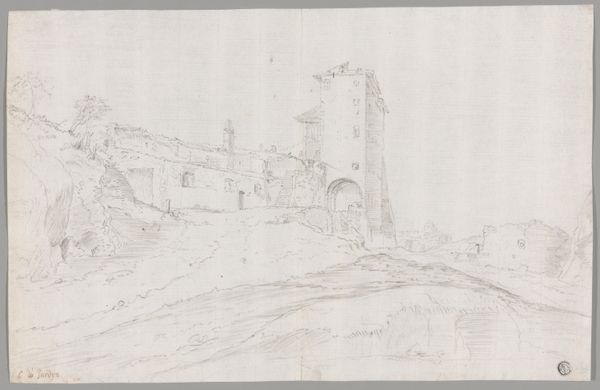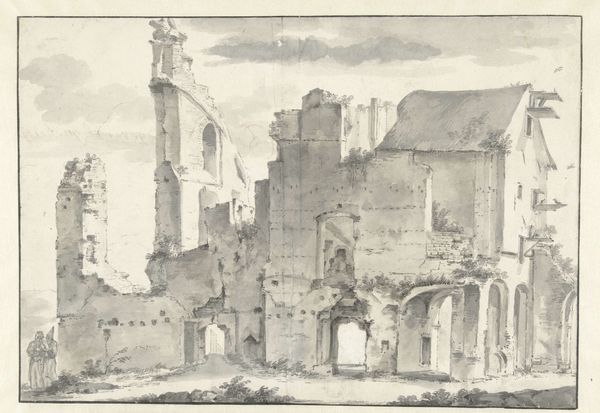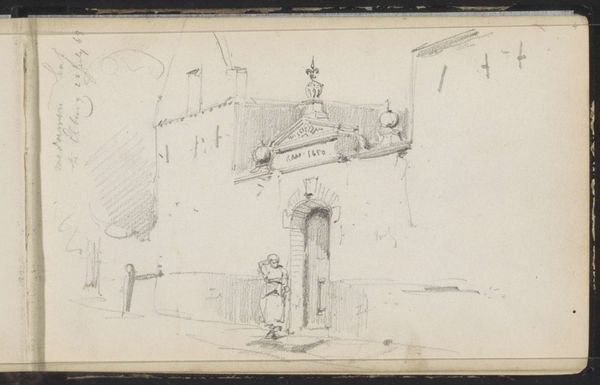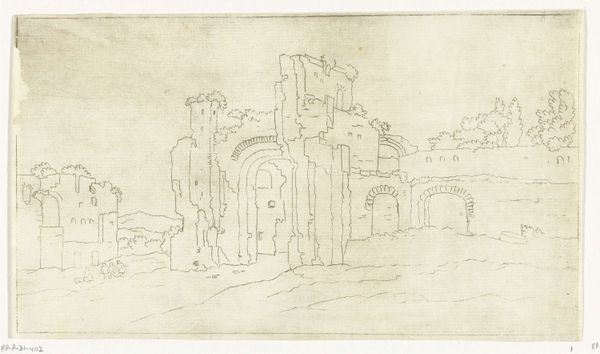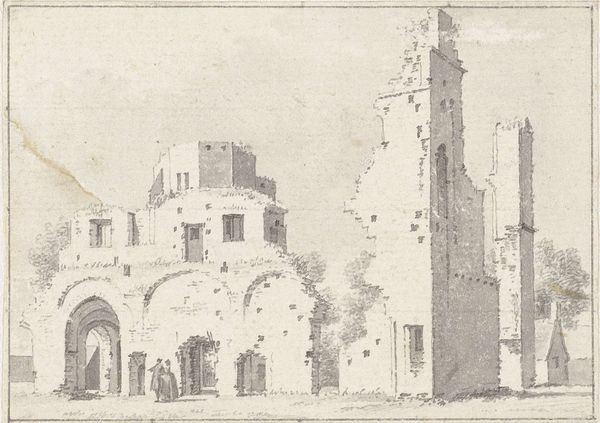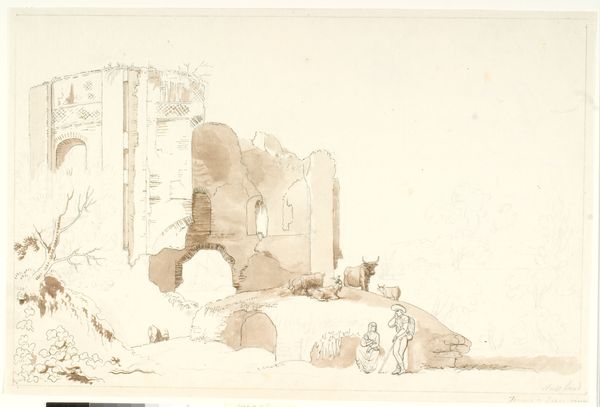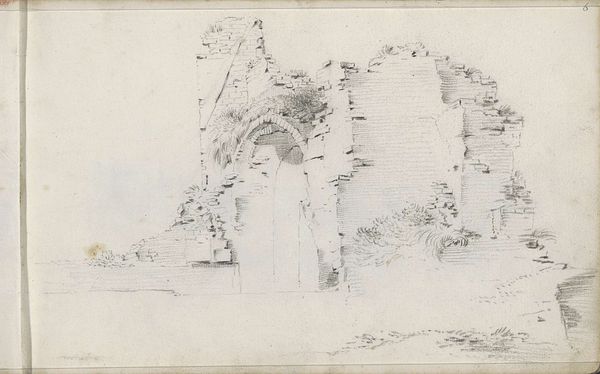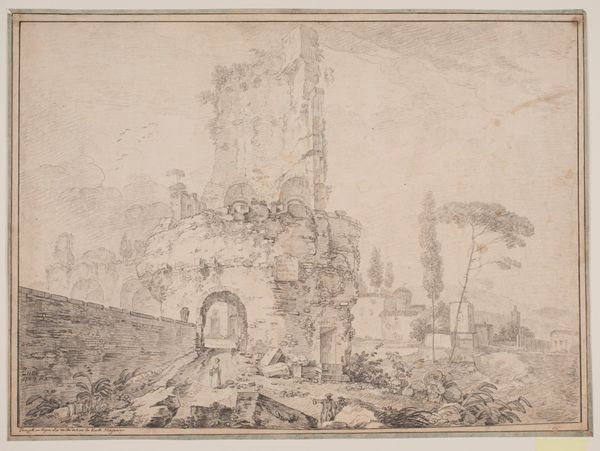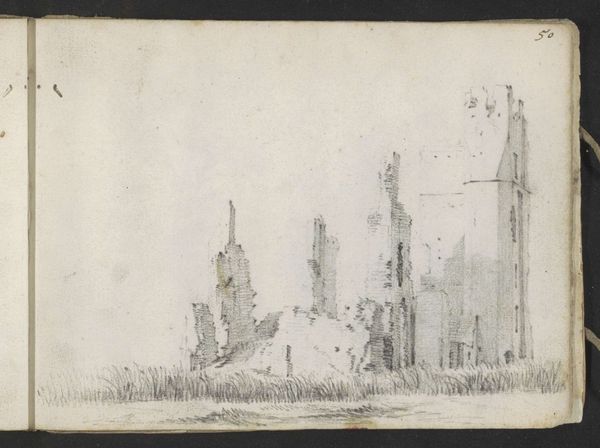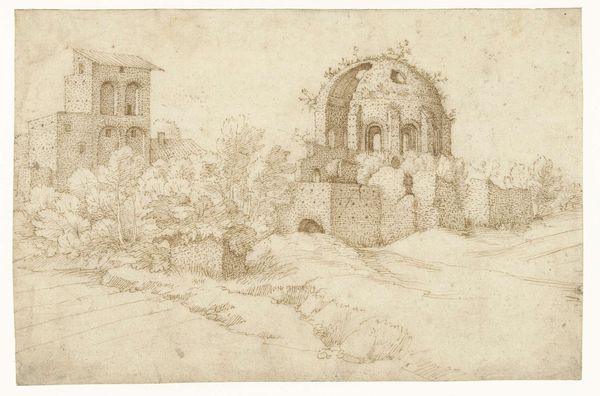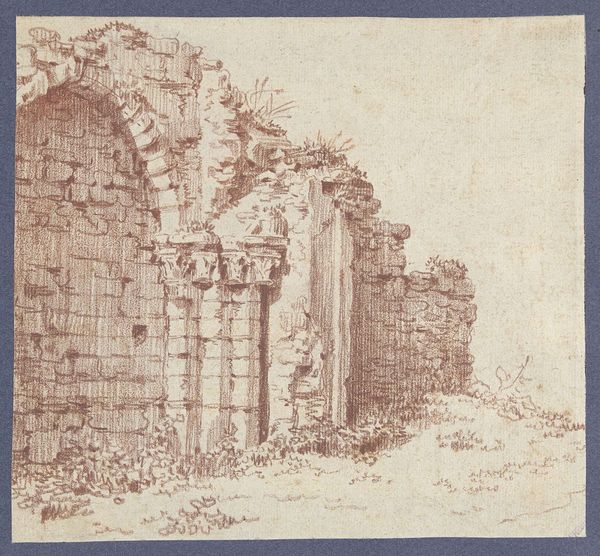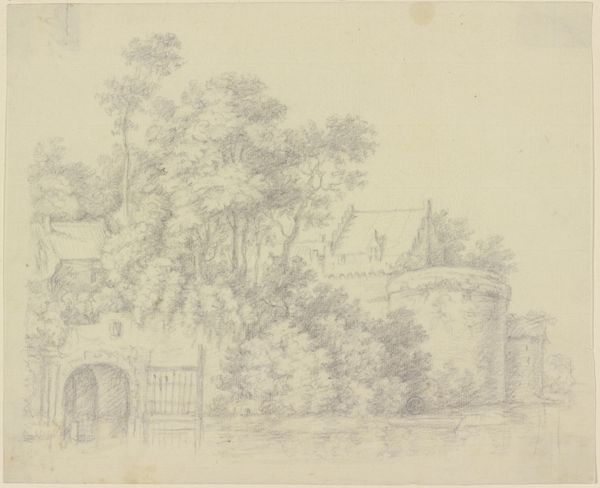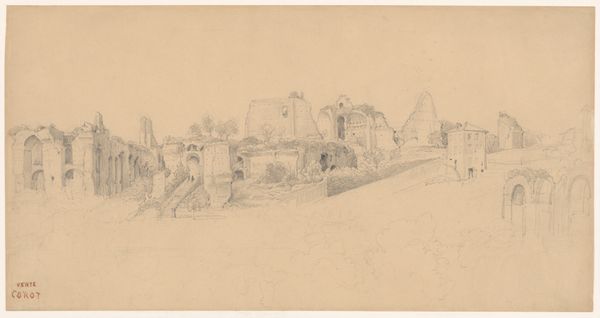
drawing, pencil
#
drawing
#
dutch-golden-age
#
pen sketch
#
pencil sketch
#
landscape
#
pencil
#
watercolor
Dimensions: height 273 mm, width 446 mm
Copyright: Rijks Museum: Open Domain
Curator: Here we have a pen and pencil drawing, enhanced with watercolor, by Willem Schellinks. It's titled "Ruïne van de abdij van Rijnsburg," dating roughly from 1637 to 1678. Editor: There's an immediate sense of decay, the transience of worldly things—all sketched out with a delicate hand. The grey tones evoke a melancholic mood; it's like looking at a ghost. Curator: Observe how Schellinks uses line weight and hatching to articulate form. The crumbling architecture provides a strong vertical structure, anchoring the composition. The tonal variations across the structure are subtle, yet vital, defining mass and space. Editor: Indeed. Ruins often act as potent symbols, don't they? Think of the rise and fall of civilizations, the inevitable passing of time, and the hubris of human ambition. The skeletal remains of the abbey stand for vanished spirituality and cultural memory, calling viewers to reflection. Curator: What I appreciate about Schellinks’ approach is his masterful rendering of textures, contrasting smooth walls with rough, broken edges. Note also how he employed chiaroscuro in the gateway, leading the eye into the unseen areas of the ruin. This subtle gradation enlivens an otherwise sombre subject. Editor: There is also something romantic, if that’s the right word, about such relics from the past being captured. It almost speaks to the cyclical nature of life – from great architectural triumphs to this quiet dilapidation. There's a certain serenity amidst the rubble. Curator: Certainly. This image encapsulates so many themes— time, destruction, memory and enduring structure that underpins it all. Editor: A silent testament, etched with remarkable visual precision, carrying within it whispers of vanished ages.
Comments
No comments
Be the first to comment and join the conversation on the ultimate creative platform.
